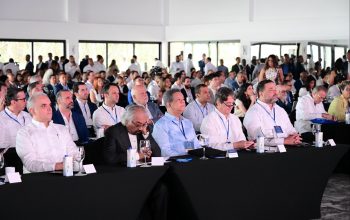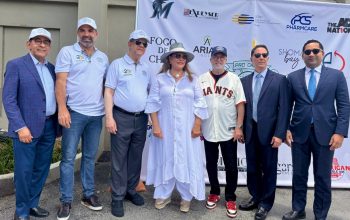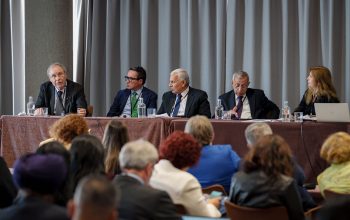news
H.E. Ambassador Argueta reflects on the Root Causes of Social Exclusion and Child Migration in the Americas at GFDD Global Roundtables
January 2, 2015
For the December edition of its online broadcast program “GFDD Global Roundtables,” Global Foundation for Democracy and Development (GFDD) welcomed H. E. Ambassador Jose María Argueta, Permanent Representative of Guatemala to the OAS. The session focused on the issue of migration at the South US Border and the increasing rates of child migrants leaving the Americas.
As Ambassador Argueta turned his attention to the root causes of the
problem, he referred to his previous publications looking at the process of social inclusion in the migrants’ home countries. Stressing the importance of adopting universal values of collaboration in conflict processes, Ambassador Argueta explained that Guatemala experienced 36 years of conflict because of a culture of government distrust. He stated that we cannot avoid
cyclical patterns of violence if governments do not change the quality of communication with their population and regain their trust.
Pointing to the issue of migration, he commended President
Obama on his recent immigration reform, which will positively affect the future of 5 million undocumented immigrants. Ambassador Argueta explained that by establishing trust, President Obama had reignited hope for the future of his country. He highlighted that we “need agents of change to change society”. Commenting on child migration, he stressed that children migrants are the obvious expression of the social issues that pervade the Americas. Concluding with a vision for the
future, the Ambassador expressed himself with hope about the possible new structure of the Organization of American States which is to be tailored around four key pillars: democracy, hemispheric security, human rights protection and comprehensive development. He determined that, should the Americas successfully integrate these four pillars, then this would offer the chance of a new form of citizenship within the American hemisphere.
About H.E Ambassador
Arguesta:
Prior to his appointment as Ambassador of Guatemala to the Organization of American States (OAS) on February 6, 2014, Ambassador Argueta served as Secretary of Strategic Intelligence under President Perez Molina’s first two years in office. He has also served his country as ambassador to Peru and Japan; and previously as the first civilian National Security Advisor under President Ramiro de Leon Carpio, where he authored and implemented the “Crisis
Committee” an entity designed to institutionalize the Presidential Decision Making Process.
In the late 1980s and early 1990s he coauthored and implemented the widely recognized ESTNA Methodology, a conflict resolution method that was instrumental in the peace processes of Guatemala and El Salvador.
While serving as ambassador to Japan, he authored the Central America-Japan Initiative, which resulted in the August 2005 “Tokyo Declaration”. He has served
as a consultant to the Inter-American Development Bank, Harvard University’s Center for Conflict Resolution, and to the National Endowment of Democracy. He sits on the International Advisory Board of “Beyond Conflict”, an entity dedicated to assisting leaders in divided societies struggling with conflict; and has served as an Scholar/Practitioner in Residence at Tufts University Institute for Global Leadership (IGL).
Ambassador Argueta has authored “The Enlightened Dissent Methodology” (A leadership methodology for peace building) and is featured in the book “Beyond Conflict” (Putting experience to work for Peace) he has written extensively on the root causes of social conflict.
About the OAS
The Organization of American States (OAS) is the world’s oldest regional organization, dating back to the First
International Conference of American States, held in Washington, D.C., from October 1889 to April 1890. That meeting approved the establishment of the International Union of American Republics, and the stage was set for the weaving of a web of provisions and institutions that came to be known as the inter-American system, the oldest international institutional system.The OAS came into being in 1948 with the signing in Bogotá, Colombia, of the Charter of the OAS, which entered into force in December 1951. It was subsequently amended by the Protocol of Buenos Aires, signed in 1967, which entered into force in February 1970; by the Protocol of Cartagena de Indias,
signed in 1985, which entered into force in November 1988; by the Protocol of Managua, signed in 1993, which entered into force in January 1996; and by the Protocol of Washington, signed in 1992, which entered into force in September 1997.
The Organization was established in order to
achieve among its member states—as stipulated in Article 1 of the Charter—"an order of peace and justice, to promote their solidarity, to strengthen their collaboration, and to defend their sovereignty, their territorial integrity, and their independence.
Today, the OAS brings together all 35 independent states of the Americas and constitutes the main political, juridical, and social
governmental forum in the Hemisphere. In addition, it has granted permanent observer status to 69 states, as well as to the European Union (EU).
The Organization uses a four-pronged approach to effectively implement its essential purposes, based on its main pillars: democracy, human rights, security, and
development.
About GFDD Global Roundtables
In close association with the United Nations, the Permanent Mission of the Dominican Republic to the UN, GFDD organizes regular meetings with UN Ambassadors and other prominent figures in the international community in an effort to spread the news, knowledge and understanding of other countries, global issues and work of different UN bodies to its audience in the Dominican Republic, the US and around
the world.
The regular series,”GFDD Global Roundtables” is also a part of GFDD’s program to support the work of the United Nations and, as a non-governmental institution affiliated to it, contribute to the visibility and understanding of its work.
Related links:
http://www.oas.org
www.gfddglobalroundtable.org







